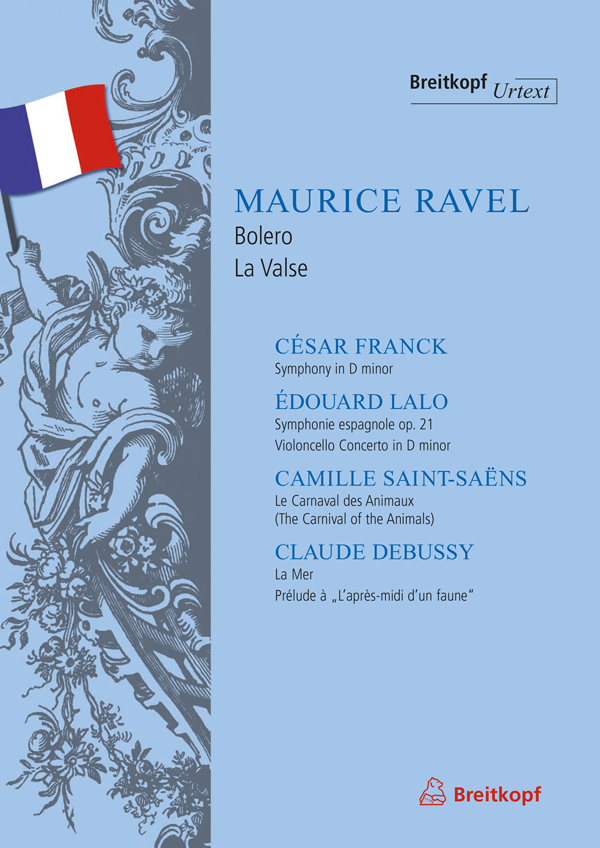Maurice Ravel
Bolero
Bolero 16’
for Orchestra
edited by Jean-François Monnard
3(picc).2(ob.d’am).3(Eb-clar.B-clar).S-sax.T-sax
(S-sax).3(dbl bsn). – 4.4.3.1. – timp.perc(4) – hp – cel – str
PB 5299 Score € 48,–
OB 5299 Strings € 4,80 each
Wind set € 82,–
Le « Bolero » en Urtext Breitkopf
« Soyez le bienvenu dans nos bibliothèques, Maurice Ravel ! » Depuis que les nouvelles éditions du « Bolero » et de « La Valse » sont parues, on trouve donc, après Debussy, Franck, Saint-Saëns et Lalo, un cinquième compositeur français pour orchestre dans le catalogue « Urtext » de Breitkopf.
La nouvelle édition se base tout d’abord sur une étude comparative des sources : à savoir la première ébauche de partition de Ravel comparée à la partition manuscrite définitive. Dans sa préface, l’éditeur donne un éclairage sur l’esthétique sonore de Ravel au vu de la réception et des interprétations historiques. En outre, Monnard nous donne accès à la conception rythmique de Ravel : « Je dois admettre que le Bolero n’est que rarement dirigé comme il devrait l’être à mon sens. Mengelberg accélère et ralentit de façon immodérée. Toscanini le dirige deux fois plus rapidement qu’il ne le devrait, et il élargit le rythme pour le final, ce qui n’est indiqué nulle part. Non : le Bolero doit être joué sur un rythme égal du début jusqu’à la fin, dans le style plaintif et monotone des mélodies arabo-hispaniques. »
Grâce à la parution de la nouvelle édition Urtext du matériel d’orchestre, le « Bolero » de Ravel est enfin disponible en vente.
How I love these wonderful rhythms … the joie de vivre expressed by the dance.
Maurice Ravel
Written in 1928 as a replacement piece for a work commissioned by the dancer Ida Rubinstein, Ravel’s Bolero is the composer’s most frequently played work today. Jean-François Monnard’s new edition is the first to be based on a musicologically well-founded source comparison. Ravel’s first sketch of the score as well as his final handwritten score were laid down as the principal sources.
In his preface, Monnard examines Ravel’s sound aesthetics against the background of concert reception and historical recordings. Moreover, he also provides insights into Ravel’s ideas concerning the tempo. Besides making various tempo markings in the sources, Ravel once complained: “I must say that the Bolero is rarely conducted the way I think it should. Mengelberg speeds up and slows down excessively. Toscanini takes it twice as fast as it should be and broadens the tempo at the close, which is indicated nowhere. No: the Bolero should be played in one single tempo from the beginning to the end, in the plaintive and monotonous style of Spanish-Arabian melodies.”
Yellowish paper that’s easy on the eyes, a sharply engraved music text – this is par for the course in Breitkopf’s new Urtext editions.
The performance material to Ravel’s Bolero can now also be purchased in its entirety for the first time.